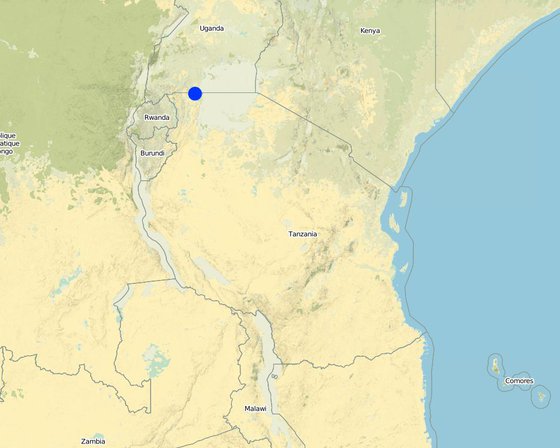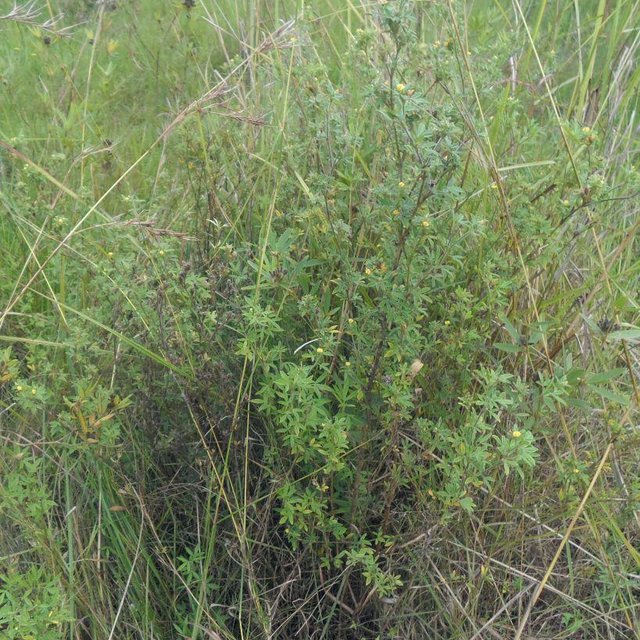

Area enclosure is done in low grazing range lands of average slope 2 – 5%. Enclosure is done by demarcating the fragile land that has direct impact to the riverine ecosystem. The land is exposed to degradation through overgrazing and soil compaction by livestock, bush fire, river bank erosion and reduced quality of pasture spps. Demarcation is done by planting trees in identified area situated about 300 meters from the riverine buffer zone. The preferred plants are Ficus thonigii. The average space between trees is 2 meters. Physical enclosure is supported and enhanced by use of protective bylaws. Reseeding of nutritious pasture species is also done and the area is left under protection for growth and regeneration of mulch, pastures and other vegetation to take place. The common pasture species reseeded are Leucaena spp, cannavaria brazile, clitoria tenatea, sesbania sesban, stylothensis, cajanus cajan, chloris gayana, branchalia spps . Direct grazing is prohibited and mulch and pasture materials are accessed through controlled and organized cut and carry.
Area enclosure is meant for rehabilitation of the riverine ecosystem and prevention of further degradation. Mulch and high nutritious pasture materials that are accessed through organized cut and carry procedures improve crop and animal productivity and have both direct and indirect impact to diversification of income sources and thus play significant role in putting the triple win solution into reality.
Purpose of the Technology: Purpose: 1) To improve vegetative cover, reduce soil erosion and prevent and rehabilitate degradation of the riverine ecosystem 2) Ensure sustainable availability and accessibility of mulch and nutritious pasture that are need for increased crop and livestock productivity 3) Promote use of environmental friendly exploitation of land resources (i.e. mulch, pasture, grass carpeting and other materials) and 4) Promote direct and indirect diversification of income sources.
Establishment / maintenance activities and inputs: Establishment and recurrent activities includes: area identification and measurement; slashing and land preparation for boundary tree planting and pasture reseeding; collection of planting materials and planting along defined boundaries for demarcation; procurement of seed and reseeding of nutritious and palatable pasture species; selective weeding; area reshaping and gap filling.
Natural / human environment: Bio-physically the area is semi natural grassland with grasses and shrubs trees. The technology is a combination of management and vegetative measure (area enclosure, demarcation using ficus thonigii and reseeding of nutritious pasture). Climatic zone is sub humid with 210 length of growing period (LGP). Slope category is gentle lying between 2-5%. Soil texture is fine heavy (clay) with medium soil depth.
Social economic wise the area is dominated by handy tools typology of mechanization. Production system is mixed (both for subsistence and commercial purposes). Inputs used includes tools (hand hoe, machete, sickles, spade and mattock), light and heavy labour, pasture seeds and tree planting materials with average annual costs of 1084.3 USD per hectare. Land ownership in technological area is communal.

地点: Missenyi distict/Minziro ward/Minziro village, Tanzania/Kagera, 坦桑尼亚联合共和国
分析的技术场所数量:
技术传播: 均匀地分布在一个区域 (approx. < 0.1 平方千米(10 公顷))
在永久保护区?:
实施日期: 不到10年前(最近)
介绍类型









| 对投入进行具体说明 | 单位 | 数量 | 单位成本 (Tanzanian shillings) | 每项投入的总成本 (Tanzanian shillings) | 土地使用者承担的成本% |
| 劳动力 | |||||
| Site/boundary identification | Mandays | 15.0 | 1.13333 | 17.0 | 100.0 |
| Site preparation for reseeding and demarcation (slashing, selective tilling, hole digging) | Mandays | 15.0 | 3.9213 | 58.82 | |
| Planting of demarcation trees, leguminous shrubs and grass pasture | Mandays | 15.0 | 3.9213 | 58.82 | |
| Fertilizer application (DAP) | Mandays | 15.0 | 1.13333 | 17.0 | |
| 设备 | |||||
| Tools | Number | 5.0 | 3.0 | 15.0 | 100.0 |
| 植物材料 | |||||
| Seeds | ha | 1.0 | 235.29 | 235.29 | |
| Seedlings | ha | 1.0 | 117.65 | 117.65 | |
| 肥料和杀菌剂 | |||||
| Fertilizer | kg | 125.0 | 0.588 | 73.5 | |
| 其它 | |||||
| Meeting on awareness creation and formalization of the practice (change of resource use practice) | Mandays | 15.0 | 3.9213 | 58.82 | 100.0 |
| 技术建立所需总成本 | 651.9 | ||||
| 技术建立总成本,美元 | 0.38 | ||||
| 对投入进行具体说明 | 单位 | 数量 | 单位成本 (Tanzanian shillings) | 每项投入的总成本 (Tanzanian shillings) | 土地使用者承担的成本% |
| 劳动力 | |||||
| Selective weeding and gap filling | Mandays | 15.0 | 1.76466 | 26.47 | 100.0 |
| Supervision and monitoring | Mandays | 15.0 | 3.53 | 52.95 | 100.0 |
| Organized cut and carry of Mulching and pasture materials | Mandays | 10.0 | 17.647 | 176.47 | 100.0 |
| monitoring area closure and organized cut and carry | Mandays | 10.0 | 17.647 | 176.47 | 100.0 |
| 技术维护所需总成本 | 432.36 | ||||
| 技术维护总成本,美元 | 0.25 | ||||
SLM之前的数量: 5.0 ton/ha
SLM之后的数量: 6-7.0 ton/ha
due to the availability and use of mulching by some farmersmaterials
SLM之前的数量: 2 acres/annum
SLM之后的数量: 10 acre/annum
area enclosure and decline of forest fire
SLM之前的数量: 3
SLM之后的数量: 8
increase in the number of nutritiuos pasture species due to reseeding
SLM之前的数量: 1200litres/cow/yeer
SLM之后的数量: 2000litres/cow/year
Contribution of nutritious cut and carry pastures
SLM之前的数量: high
SLM之后的数量: low
availability of manure from animal kept under zore grazing
SLM之前的数量: low
SLM之后的数量: high
Income accrued from sell of mulching and pasture materials.
SLM之前的数量: weak
SLM之后的数量: strong
empowerment and capacity building of environmental committee.
The technology has contributed to availability and accessibility to mulching and nutritious pasture that are need for increased crop and livestock productivity. This has both direct and indirect impact on the income of the community and hence livelihood (e.g. ability to meet education and health expenses).
SLM之前的数量: low
SLM之后的数量: high
Reduction in uproductive loss of both green and blue water.
SLM之前的数量: high
SLM之后的数量: low
Resultant of vergetation cover
SLM之前的数量: high
SLM之后的数量: low
Reduce uproductive evaporation due vegetation cover
SLM之前的数量: low
SLM之后的数量: high
Improved vegetation cover
SLM之前的数量: high
SLM之后的数量: low
Cotrolled soil erosion due to runoff
SLM之前的数量: high
SLM之后的数量: low
Reduced overgrazing and animla trumpling
SLM之前的数量: high
SLM之后的数量: low
Reduced overgrazing and animla trumpling
SLM之前的数量: low
SLM之后的数量: high
Controlled fire burning
SLM之前的数量: high
SLM之后的数量: low
Controled bush fire
SLM之前的数量: high
SLM之后的数量: low
harzards due to bush fire but reduced due to enclosure, fire break and use of bylaws.
SLM之前的数量: high
SLM之后的数量: low
Resultant of improved vegetation cover and controlled erosion
SLM之前的数量: high
SLM之后的数量: low
Resultant of improved vegetation cover and controlled erosion